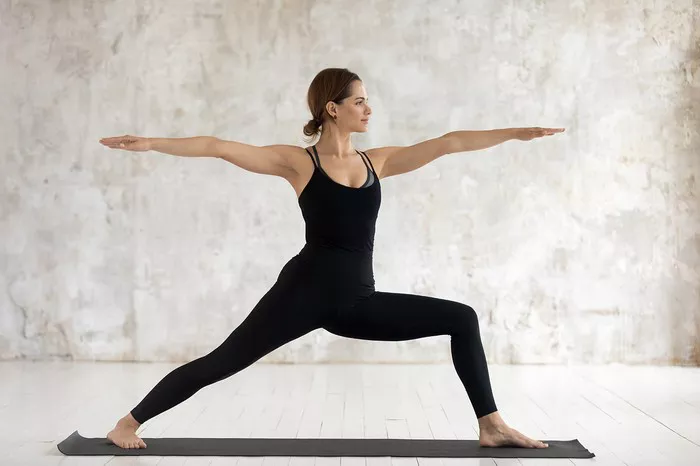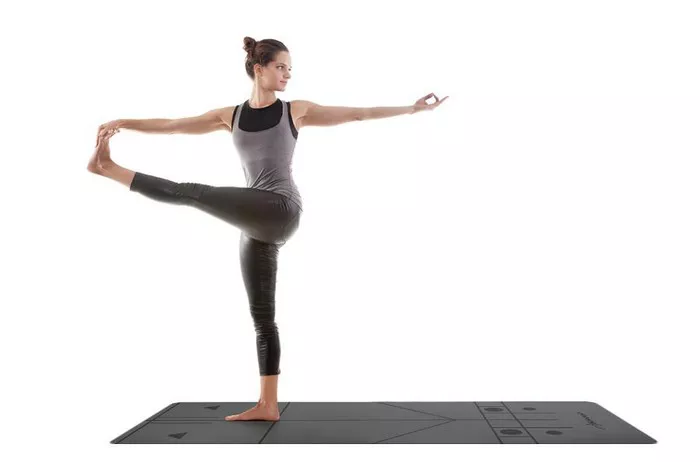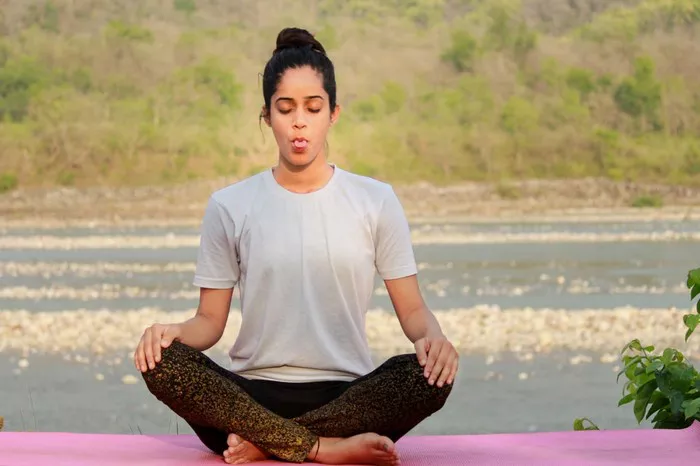Yoga, in its myriad forms, has been a cornerstone of physical and mental well-being for thousands of years. Among the many styles of yoga, Ashtanga Yoga has gained prominence for its rigorous and structured approach to practice. With its fast-paced, physically demanding sequences and emphasis on consistency, many practitioners wonder if Ashtanga yoga is too hard on the body, particularly for those who are beginners or have physical limitations.
In this article, we will explore what Ashtanga Yoga entails, how it can impact the body, the potential risks, and the benefits that practitioners can expect from a well-rounded practice. Understanding these aspects will help you assess whether Ashtanga Yoga is the right choice for your body and your fitness goals.
What is Ashtanga Yoga?
Ashtanga Yoga is a system of yoga that was popularized by Sri K. Pattabhi Jois in the 20th century, drawing on ancient teachings found in the Yoga Korunta, a text that dates back to around 200 CE. Ashtanga Yoga is a comprehensive and structured style of yoga that focuses on synchronizing the breath with a progressive series of postures.
The practice is divided into six distinct series, each one building upon the previous. These series are:
- Primary Series (Yoga Chikitsa) – Focuses on alignment, flexibility, and strength.
- Secondary Series (Nadi Shodhana) – Aimed at opening the body and purifying the nervous system.
- Advanced Series A (Sthira Bhaga) – A series meant to increase strength and endurance.
- Advanced Series B (Sthira Bhaga)
- Advanced Series C (Sthira Bhaga)
- Advanced Series D (Sthira Bhaga)
Ashtanga Yoga is distinguished by its set sequence of postures, its focus on “vinyasa” (movement coordinated with breath), and the principle of “drishti” (gaze points). One of the defining characteristics of Ashtanga is that it requires practitioners to memorize the sequences, so there is no need for a teacher to call out the poses during class.
This structured and repetitive approach helps to develop both physical and mental discipline over time, which can lead to remarkable improvements in overall well-being.
The Benefits of Ashtanga Yoga
Before diving into the physical demands of Ashtanga Yoga, it’s essential to understand the numerous benefits it can offer to practitioners. These benefits make it an appealing choice for those looking for a challenging yoga practice.
Increased Strength: Ashtanga Yoga involves a series of poses that require significant core, arm, and leg strength. Practicing the series consistently leads to noticeable increases in overall body strength.
Improved Flexibility: Many of the postures in Ashtanga Yoga emphasize stretching and lengthening the muscles, which improves flexibility over time. Practitioners often see remarkable gains in their flexibility, particularly in their hamstrings, hips, and spine.
Enhanced Cardiovascular Health: Because Ashtanga Yoga is a dynamic and continuous practice that links breath with movement, it can serve as a form of cardiovascular exercise. It promotes circulation and heart health, much like aerobic exercise.
Detoxification and Cleansing: The rapid movement between postures, along with the practice of “Ujjayi breath” (a technique involving a subtle constriction at the back of the throat), helps to increase the body’s internal heat, leading to sweating and detoxification.
Mental Clarity and Focus: Ashtanga Yoga emphasizes the coordination of breath with movement, along with the focus on a fixed gaze (drishti). This combination enhances concentration, calmness, and clarity of mind, while helping to relieve stress and anxiety.
Discipline and Consistency: The structured nature of Ashtanga Yoga teaches practitioners the value of consistency. This discipline is important not just for yoga practice but can carry over into other areas of life.
Is Ashtanga Yoga Hard on the Body?
Now that we’ve outlined the many benefits of Ashtanga Yoga, it’s important to address the key question: Is Ashtanga yoga hard on the body?
The answer to this question depends on several factors, including an individual’s current level of fitness, experience with yoga, and their approach to the practice. Here are some considerations when determining how Ashtanga might impact the body:
1. Intensity of the Practice
Ashtanga Yoga can be physically intense, especially when practicing the full primary series or attempting more advanced sequences. The style is known for its fast-paced flow, where movements are performed in rapid succession with little rest between postures. For beginners or individuals who are not accustomed to high-intensity exercise, this pace can feel overwhelming.
The practice also emphasizes strength and endurance. Some of the postures, such as chaturanga dandasana (a low push-up position) and arm balances, require substantial upper body and core strength. Without proper strength or preparation, attempting these postures could strain the muscles and joints.
2. Risk of Injury
Because Ashtanga Yoga demands a high level of mobility, flexibility, and strength, there is a risk of injury, especially if the practice is not approached with mindfulness and proper alignment. Common injuries among Ashtanga practitioners include strains in the hamstrings, lower back, wrists, and shoulders.
The intensity of the practice, combined with the repetitive nature of the sequences, may also increase the likelihood of overuse injuries. Some individuals might push themselves too hard in an effort to keep up with the pace or achieve advanced postures before their bodies are ready.
To avoid injury, it’s crucial for practitioners to listen to their bodies, take breaks when needed, and avoid pushing beyond their limits. Many teachers recommend modifying postures and using props to ensure proper alignment and reduce strain.
3. The Demands of Advanced Series
As practitioners progress to more advanced series, the postures become increasingly demanding. The Advanced Series (A, B, C, D) involves more complex arm balances, deep backbends, and intricate transitions between postures. These sequences require significant flexibility, strength, and experience, which can be hard on the body for those who are not sufficiently prepared.
It’s also important to note that not all practitioners will eventually progress to the advanced series. In fact, many students spend a lifetime practicing the primary series or secondary series, which can be sufficient for building strength, flexibility, and mental clarity.
4. The Importance of Alignment and Modification
While Ashtanga Yoga can be physically intense, it is possible to practice safely with the right focus on alignment. Teachers who are well-trained in Ashtanga Yoga emphasize the importance of correct alignment in each posture to prevent unnecessary strain and injury.
Additionally, modifications can be used for individuals with injuries or physical limitations. Using props such as blocks, straps, and cushions can make postures more accessible and reduce the risk of injury. It’s important to consult with a knowledgeable instructor who can guide modifications based on your body’s needs.
5. Mental and Emotional Considerations
Ashtanga Yoga requires a great deal of mental focus, discipline, and patience. For some practitioners, this intense focus can help release tension and stress, leading to greater emotional balance. However, for others, the rigorous nature of the practice might cause frustration or mental burnout, especially if expectations are unrealistic.
It’s essential to approach the practice with a mindset of self-compassion and gradual progress. Yoga, in any form, is about cultivating a balanced relationship with one’s body and mind, and Ashtanga is no different. If the intensity of the practice leads to mental or emotional strain, it’s important to reassess whether this style of yoga is the right fit for you.
Who Should Practice Ashtanga Yoga?
While Ashtanga Yoga offers many benefits, it may not be the best choice for everyone. Here are some general guidelines on who might benefit from Ashtanga and who may want to consider other forms of yoga:
Best suited for:
- Individuals with a solid foundation in physical fitness who are looking for a more challenging, structured yoga practice.
- Those seeking a high-intensity workout combined with spiritual and mental growth.
- People who appreciate discipline, consistency, and memorization in their yoga practice.
- Advanced practitioners who have the strength, flexibility, and experience to handle more complex postures.
May not be ideal for:
- Beginners or individuals new to yoga who have not developed foundational strength and flexibility.
- People with significant physical limitations, injuries, or chronic pain conditions (although modifications are possible, a gentler style might be preferable in some cases).
- Those looking for a more meditative, slower-paced practice with less physical strain.
Conclusion
Ashtanga Yoga is undeniably a demanding style of yoga, both physically and mentally. While it can be intense and challenging on the body, with proper preparation, mindfulness, and respect for your body’s limitations, it can also be an incredibly rewarding practice. It offers numerous physical benefits, such as increased strength, flexibility, and cardiovascular health, while also promoting mental clarity and emotional balance.
However, it is important to approach Ashtanga Yoga with patience and an understanding of your own body’s needs. If you’re considering incorporating Ashtanga Yoga into your routine, it’s a good idea to seek guidance from an experienced instructor and listen carefully to your body’s signals. With the right approach, Ashtanga Yoga can be an enriching practice that promotes long-term health and well-being.
Remember, yoga is a personal journey. There is no need to rush, and the practice is about connecting with your body, mind, and breath at your own pace. Whether you choose to pursue Ashtanga or another style, the key is consistency, awareness, and a compassionate approach to your practice.
Related Topics:














